Q
What is regular maintenance on a 2020 Volvo XC90?
The regular maintenance for the 2020 Volvo XC90 primarily includes oil and oil filter replacement, tire inspection and rotation, brake system check, air filter replacement, and inspections of various fluids like brake fluid and coolant. It's recommended to perform basic maintenance every 10,000 kilometers or 12 months to ensure vehicle performance. Since the XC90 is equipped with a turbocharged or hybrid system, special attention should be paid to oil quality. It is recommended to use 0W-20 or 5W-30 fully synthetic oil that meets Volvo certification to protect the engine. In addition, regularly checking the battery status and software updates is also important, especially the high-voltage battery system of hybrid models, which requires diagnosis by professional technicians. In daily use, car owners are advised to pay attention to the maintenance reminder light on the dashboard and make an appointment with an authorized service center in advance, as some maintenance items such as transmission oil replacement may require special tools or data reset. For climates with always hot and humid, the replacement cycle of the air conditioning filter can be appropriately shortened to 15,000 kilometers to maintain air quality inside the vehicle. If the vehicle is equipped with an air suspension, it is also necessary to regularly check the air pump and pipeline tightness to prevent rubber components from aging accelerated by high temperatures.
Special Disclaimer: This content is published by users and does not represent the views or position of PCauto.
Related Q&A
Q
How to check the oil in a 2020 Volvo XC90?
To check the oil level in a 2020 Volvo XC90, first make sure the vehicle is parked on level ground and turned off for at least 10 minutes to allow the oil to drain back into the pan. Then pop the hood and locate the orange dipstick—pull it out, wipe it clean, push it all the way back in, and pull it out again to see if the oil level sits between the two marks. If it’s below the lower mark, top it off with the manufacturer-recommended 0W-20 or 5W-30 synthetic oil.
One thing to note: the XC90 comes with an electronic oil level gauge, which you can access through the vehicle status menu on the infotainment screen. It’s way more convenient and gives real-time readings.
For regular maintenance, it’s a good idea to check the oil once a month, especially before a long drive. While you’re at it, take a look at the oil color—if it’s black or has particles in it, that can clue you in on how healthy the engine is. If you notice the oil is burning through faster than usual, it could be due to aging seals or worn piston rings—best to get that checked out by a mechanic ASAP.
Also, you might want to adjust the oil viscosity based on the season. In hot weather, 5W-30 offers better protection, while 0W-20 flows better during cold starts. And don’t forget to change the oil and filter regularly—usually every 10,000 kilometers or 12 months, whichever comes first. Always double-check your owner’s manual for the exact schedule, though.
Q
How big is the gas tank on a 2020 XC90?
The 2020 Volvo XC90 has a fuel tank capacity of 71 liters, a design that meets long-distance driving needs while balancing fuel efficiency. For a midsize to large SUV, 71 liters is above average in its class—for reference, the BMW X5 holds around 83 liters and the Audi Q7 about 85 liters—but the XC90's mild hybrid system helps optimize fuel consumption, so its actual range isn't lacking. For daily use, it's advisable to keep at least a quarter tank of fuel remaining to prevent the fuel pump from overheating and getting damaged due to prolonged operation at low fuel levels. Additionally, if you frequently take long trips, you can pay attention to gas station locations or use navigation apps to plan refueling stops; Volvo's in-car system typically also alerts you to nearby gas stations when fuel is low. It's worth noting that the actual usable tank capacity may be slightly less than the stated figure, as some expansion space and safety margin are reserving in the design.
Q
How much oil in a 2020 Volvo XC90?
The oil capacity of the 2020 Volvo XC90 varies by engine type. Common T5 or T6 gasoline engines typically require approximately 5.6 to 6.5 liters of oil, while diesel versions like the D5 may need 6.5 to 7.5 liters. For exact figures, always refer to your vehicle manual or have it measured by a professional service shop. It's recommended to use fully synthetic oil that meets Volvo's certifications, such as 0W-20 or 5W-30, to ensure optimal engine performance and lubrication. Regularly checking the oil level is crucial—this can be done via the dashboard's electronic oil gauge or the traditional dipstick. If you notice abnormal oil consumption or the level drops below the minimum mark, top it up promptly or investigate the cause. Additionally, when changing the oil, always replace the oil filter at the same time and follow the manufacturer's suggested maintenance intervals, usually every 10,000 kilometers or 12 months. If you frequently drive in high-temperature conditions or heavy traffic, consider shortening this interval slightly. Knowing these details will help you better maintain your vehicle, extend engine life, and remember to purchase oil and maintenance services through official channels to avoid using inferior products that could harm your vehicle's performance.
Q
Where is the 2020 Volvo XC90 made?
The main production site for the 2020 Volvo XC90 is the Torslanda plant in Sweden, Volvo's flagship manufacturing facility responsible for producing the brand's premium models, including the XC90 lineup. Renowned for its high level of automation and strict quality control, this plant ensures every vehicle rolling off the line meets global uniform standards. Beyond Sweden, some XC90s may also be produced at the Chengdu plant in China, primarily supplying the Asian market, though core technologies and craftsmanship remain consistent with those in Sweden. As Volvo's representative luxury SUV, the XC90 is built on the SPA modular platform, emphasizing safety and environmental performance. It comes standard with the City Safety system across the range and offers a plug-in hybrid version, showcasing the brand's leading position in electrification. The vehicle is also quite popular in local markets, with its Scandinavian design, spacious seven-seat layout, and rich intelligent driving assistance functions being key factors attracting consumers. Whether produced in Sweden or China, all XC90s undergo the same rigorous testing to ensure driving experience and reliability meet brand requirements.
Q
How long will a 2020 Volvo XC90 last?
The 2020 Volvo XC90 can typically hit 200,000 to 300,000 kilometers or more with regular maintenance and proper use. Its actual lifespan really depends on how well the owner takes care of it and the driving conditions. This SUV is known for its solid SPA platform and reliable powertrains, especially the 2.0-liter turbocharged or plug-in hybrid versions. Stick to regular oil changes, filter replacements, transmission fluid services, and follow the manufacturer-recommended maintenance schedule, and you’ll definitely boost its durability. On top of that, the XC90’s body uses high-strength steel and rust-proofing, which does a great job fighting off the effects of humid climates—super important if you’re in a place with year-round heat and moisture. It’s worth keeping an eye on the electronic systems and air suspension, though; those high-end features need a bit more attention, and regular checks can head off potential issues. If you’re planning to keep it long-term, go for genuine parts and get professional inspections regularly. Not only will that extend the vehicle’s life, but it’ll also help maintain better resale value. All in all, the XC90 is a luxury SUV built to last, and good maintenance is key to keeping it reliable for the long haul.
Q
What engine does a 2020 Volvo XC90 have?
The 2020 Volvo XC90 offers a range of powertrain options, including gasoline, diesel, and plug-in hybrid variants, to suit different driving needs. The gasoline lineup features the T6 model with a 2.0-liter four-cylinder engine equipped with both turbocharging and supercharging, delivering 316 horsepower and 400 Nm of torque. For even more performance, the T8 plug-in hybrid combines that same 2.0-liter twin-charged engine with an electric motor, resulting in a combined output of 400 horsepower and an all-electric range of approximately 40 kilometers. On the diesel side, the D5 model uses a 2.0-liter four-cylinder turbocharged diesel engine paired with a 48V mild hybrid system, producing 235 horsepower and 480 Nm of torque—striking a balance between fuel efficiency and performance. Volvo's Drive-E engine family is known for its efficiency and environmental friendliness, and all engines come mated to an 8-speed automatic transmission with standard all-wheel drive, ensuring stable handling across various road conditions. Additionally, the XC90 is packed with advanced driver assistance systems and a luxurious interior, showcasing Volvo's commitment to safety and comfort.
Q
How many fatalities has the 2020 Volvo XC90?
The 2020 Volvo XC90 delivers exceptional safety performance. According to data from authoritative testing bodies, this vehicle earned a five-star rating in Euro NCAP crash tests, with an impressive 98% score for adult occupant protection and 87% for child occupant protection, demonstrating an extremely high level of passive safety. On actual roads, the XC90 comes equipped with the advanced City Safety system, which includes features like automatic emergency braking and lane keeping assist – a suite of active safety technologies that effectively reduce accident risks. While specific fatality statistics vary by region and time period, the XC90, as Volvo's flagship SUV, has consistently maintained industry-leading safety credentials. It's worth noting that Volvo has long been committed to its "Vision Zero" goal of eliminating traffic fatalities. The XC90 comes standard with a side-impact protection system and a boron steel-reinforced body structure, both designed to provide maximum protection for occupants in the event of a collision. If vehicle safety is a priority for you, you might also want to check out its Pilot Assist system. This semi-autonomous driving technology helps reduce driver fatigue on highways, further enhancing overall driving safety.
Q
Does the 2020 XC90 have a third row?
Yes, the 2020 XC90 comes standard with a third-row seat, featuring a 2+3+2 seven-seat layout. The third row is suitable for passengers up to 165cm tall for short trips, and the seatbacks can be split 50/50 and folded down to expand cargo space. This midsize to large SUV, based on the SPA platform, offers three powertrain options across the range: T5, T6, and T8. The T8 plug-in hybrid variant delivers a combined 407 horsepower and an all-electric range of approximately 40 kilometers, making it ideal for city commuting. The third row is equipped with independent air vents and ISOFIX child seat anchors, though access requires folding the second-row seats. Among its peers, the XC90's third-row headroom outperforms the BMW X5 but falls slightly short of the Mercedes-Benz GLS; it's advisable to test it in person before purchasing. It's worth noting that models equipped with the optional air suspension may slightly compromise third-row vertical space, and with all seven seats in use, the trunk capacity is 314 liters, enough to fit two carry-on suitcases.
Q
How much horsepower does a 2020 XC90 have?
The 2020 Volvo XC90 offers different powertrain setups based on engine type. The T5 trim comes with a 2.0-liter turbocharged four-cylinder engine that cranks out 250 horsepower. Step up to the T6, and you get a 2.0-liter unit with both turbocharging and supercharging—this twin-charged system pushes output to 316 horsepower. At the top of the range, the T8 plug-in hybrid pairs that same 2.0-liter twin-charged engine with an electric motor, resulting in a combined 400 horsepower for some seriously strong performance. All XC90 models come standard with an 8-speed automatic transmission and all-wheel drive, balancing power with handling stability. The hybrid version even offers an all-electric mode, perfect for short commutes. The engine technology here really shows off Volvo's work in efficient power. The twin-charged system, in particular, uses the turbo and supercharger together to effectively reduce the power lag you often get with smaller-displacement engines at low revs. Plus, the plug-in hybrid fits right in with today's focus on efficiency. So, buyers can pick the powertrain that best suits their needs.
Q
Does the 2020 Volvo XC90 have good gas mileage?
The 2020 Volvo XC90's fuel economy lands in the middle of the pack for luxury SUVs in its class, with specific numbers varying by powertrain. The T5 front-wheel-drive variant, packing a 2.0-liter turbocharged engine, returns around 8.5 liters per 100 kilometers in combined driving. Step up to the T6, which gets both turbo and supercharging plus all-wheel drive, and that figure ticks up to roughly 9.1 liters/100km. Then there's the plug-in hybrid T8—its electric-only range hits about 40 kilometers, and when running in hybrid mode, fuel consumption can drop as low as 2.1 liters/100km. For a seven-seat midsize-to-large SUV, these stats strike a decent balance between practicality and eco-friendliness, with the T8 especially standing out for buyers who prioritize efficiency. It’s worth keeping in mind, though, that real-world MPG depends a lot on driving habits, road conditions, and how well you maintain the vehicle. Regularly checking tire pressure and engine health can go a long way in optimizing fuel efficiency. If you do a lot of highway miles, a version with a more responsive start-stop system might be your best bet, while the plug-in hybrid really shines for city commuting. Hybrid tech is becoming more common across the segment, so expect more brands to roll out similar setups down the line to juggle power and fuel use.
Latest Q&A
Q
How long does a 2022 BMW X4 last?
The 2022 BMW X4 can typically hit 200,000 to 300,000 kilometers or more with regular use and maintenance—its actual lifespan really comes down to driving habits, how often you service it, and the conditions it’s used in. Under the hood, the turbocharged engine and 8-speed automatic transmission are pretty solid tech-wise. Sticking to the official maintenance schedule, swapping out oil and filters on time—all that good stuff—will definitely help it go the distance. The body uses high-strength steel and has rust-proofing, so it holds up well against corrosion even in tropical climates. Something to keep in mind though: German luxury cars pack a lot of electronics. It’s smart to check the wiring and sensors regularly to avoid little glitches that humidity can cause. If you drive a mix of roads, shortening the service intervals a bit can keep the vehicle in better shape. Reliability-wise, it’s on par with other mainstream luxury brands in its class, but maintenance costs are a touch higher than non-luxury makes. Using genuine parts is the way to go to protect its value. If you’re planning to keep it long-term, hang onto those complete service records—they’ll make a difference when it’s time to sell.
Q
What are the maintenance costs for a 2022 X4 M40i?
As a high-performance SUV, the 2022 X4 M40i will have slightly higher maintenance costs than regular models, mainly depending on mileage and service items. A regular minor service, which includes oil and oil filter changes, costs around 1000 to 1500 Malaysian Ringgit. A major service, involving replacements like brake fluid and coolant, can run from 3000 to 4000 Malaysian Ringgit. Exact prices may vary by dealership and promotional offers. The 3.0-liter inline-six turbo engine delivers strong performance, but it's advisable to use the high-quality oil recommended by the manufacturer to ensure long-term stable engine operation. Also, regularly check tire wear and the brake system, as high-performance models tend to wear out tires and brake pads faster. To further control maintenance costs, consider purchasing the manufacturer's maintenance package, which usually comes with certain discounts. Additionally, developing good driving habits can extend component life, such as avoiding frequent hard acceleration and sudden braking.
Q
What are the common problems with the 2022 X4?
The 2022 X4, as a luxury sport SUV, delivers a generally reliable performance, but there are a few common issues to keep in mind. Some owners have reported occasional lag or black screens with the infotainment system, especially when using navigation in high temperatures. It's advisable to regularly update the system software to optimize performance. Additionally, certain models may experience slight transmission jerking at low speeds, which is often related to driving habits. Adjusting the driving mode or updating the transmission software can usually improve this. Interior trim pieces might develop minor rattles after long-term use, particularly around the sunroof and door panels. Checking fasteners during regular maintenance can effectively prevent this. While the X4's handling is excellent, the stiffer suspension tuning can compromise comfort on bumpy roads. Opting for models equipped with adaptive suspension is recommended for a better experience. Regarding fuel economy, although official figures are decent, real-world consumption rises noticeably with frequent aggressive driving—a common trait among all high-performance SUVs. For after-sales service, choosing authorized service centers ensures the use of genuine parts and professional diagnostic equipment, which is crucial for maintaining the vehicle's long-term performance.
Q
What engine is in the BMW X4 2022?
The 2022 BMW X4 offers a range of powertrain options depending on the trim level, with the most common being the 2.0-liter four-cylinder turbocharged engine (B48) and the 3.0-liter inline-six turbocharged engine (B58). The former powers the xDrive30i model, delivering around 248 horsepower, while the latter is found in the M40i, cranking out up to 382 horsepower. Both are paired with an 8-speed Steptronic automatic transmission, balancing performance and fuel efficiency. These engines feature BMW's TwinPower Turbo technology, combining direct fuel injection and Valvetronic variable valve control, which provides ample torque at low revs—great for city driving and highway cruising alike. It's worth noting that the B58 has earned a solid reputation worldwide for its impressive reliability and tuning potential, while the B48 stands out for its smoothness and efficiency. Additionally, all X4 models come standard with xDrive intelligent all-wheel drive, adapting to different road conditions and handling everything from daily commutes to occasional light off-roading. For those craving more performance, there's also the X4 M Competition, though it's a separate model line, featuring the S58 3.0-liter twin-turbo engine. When it comes to maintenance, sticking to the official schedule for regular oil and filter changes is recommended to keep the engine running at its best.
Q
How much does a 2022 BMW X4 cost?
The price of the 2022 BMW X4 varies depending on configuration and optional extras, with new car prices ranging from approximately RM350,000 to RM450,000, depending on the chosen powertrain and personalized options—for example, the performance differences between the xDrive30i and M40i directly impact the price. This model continues the X Series' coupe-SUV design, featuring either a 2.0T or 3.0T turbocharged engine, standard all-wheel drive, and intelligent driving assistance features. The interior boasts leather seats and the latest iDrive system, blending technological flair with luxury. It's worth noting that used car prices are influenced by condition, mileage, and warranty remaining, typically costing 20% to 30% less than new models. Rivals like the Mercedes-Benz GLC Coupe or Audi Q5 Sportback are also worth considering, but the BMW X4 appeals to many young buyers with its sporty tuning and brand recognition. Before purchasing, it's advisable to check the official website for the latest promotions or visit a dealership for a test drive to get accurate pricing and experience its dynamic performance.
View MoreRelated News
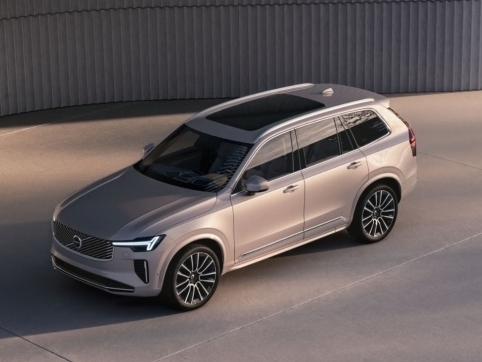
Volvo XC90 Facelift Launched in Malaysia with Exterior and Interior Changes
JohnApr 11, 2025
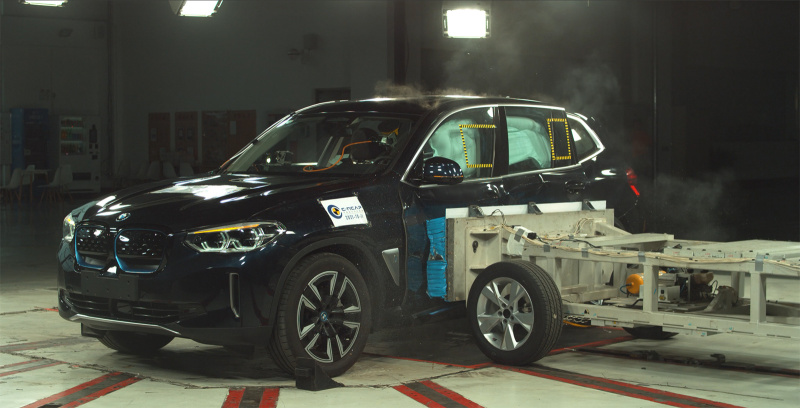
Structure, Materials, Airbags, What are the main evaluation criteria for automotive safety performance?
WilliamSep 14, 2024
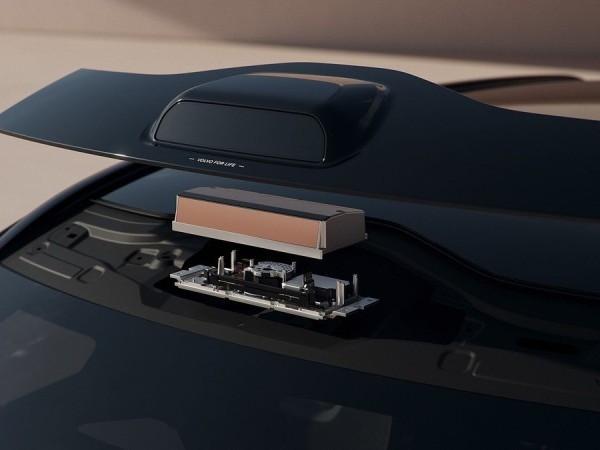
Warning: Vehicle LiDAR Can Damage Your Phone Camera!
AshleyMay 19, 2025

Well-Planned Space: The Exceptional Practicality of the Volvo XC60
Kevin WongMay 16, 2025
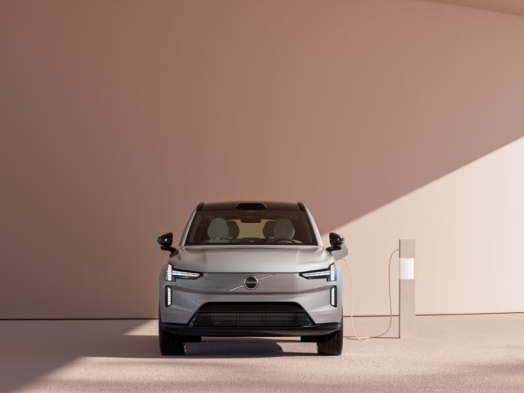
Volvo EX90 Electric SUV Now Available – RM 442,888
LienApr 11, 2025
View More












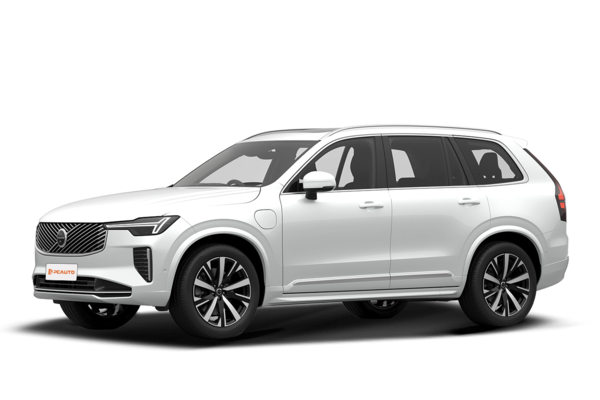





Pros
Cons